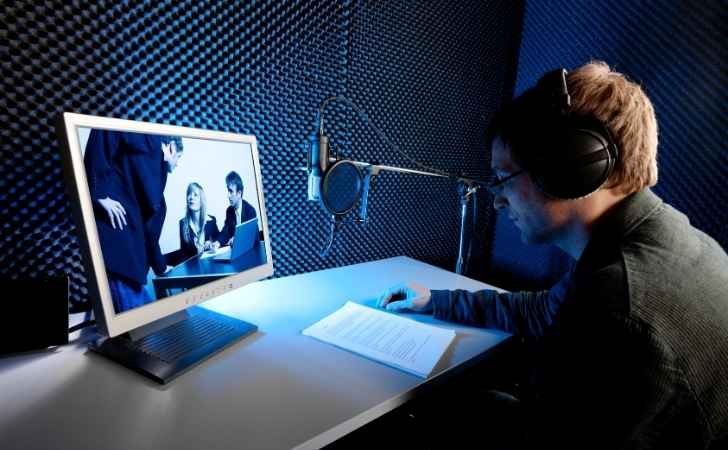AFFILIATE DISCLOSURE
This post may contain affiliate links. An affiliate means Escribr may earn referral fees if you make a purchase through our link without any extra cost to you. It helps to keep this blog afloat. Thanks for your support!
Did you know that by visiting this blog, you are doing good in the world? READ THIS.
Medical scribes play a vital yet often overlooked role in healthcare, ensuring that every detail of patient visits is accurately recorded. But what does it take to become a medical scribe, and why might this be a fantastic career choice?
If you’re exploring new career possibilities and have an interest in healthcare, becoming a medical scribe could be a rewarding option, especially if you’re looking for a flexible, remote position.
This article covers what the job entails, the skills and knowledge you’ll need to succeed, the benefits of working as a scribe, and some of the top employers currently seeking professionals in this field.
What Does a Medical Scribe Do?
Medical scribes are responsible for accurately recording patient interactions as they happen, capturing the details of what healthcare providers discuss with patients.
This role can be performed either on-site or remotely.
To excel as a medical scribe, a solid understanding of medical terminology, anatomy, and strong communication skills are essential.
Speed and accuracy in typing are also critical.
Here are some of the main responsibilities of a medical scribe:
- Document conversations between healthcare providers and patients in real time.
- Record the patient’s medical history, examination notes, treatment plans, and follow-up instructions in the electronic health record (EHR).
- Maintain patient confidentiality and comply with HIPAA regulations to protect sensitive information.
- Retrieve lab and imaging results for healthcare providers.
- In some cases, assist with coding medical diagnoses and procedures.
Some companies may require medical scribes to transcribe audio files, though this is less common.
Medical scribes work in various settings, such as hospitals, clinics, or from home.
Work schedules can vary widely depending on the setting.
For instance, if you’re working in a private practice with regular office hours, your schedule will likely follow those hours.
However, hospital positions may require flexibility, as hospitals operate around the clock.
How Are Medical Scribes Different from Medical Transcriptionists?
Medical scribes and medical transcriptionists are both crucial in healthcare documentation, but their roles, work settings, and methods of interaction with medical staff differ significantly.
A medical scribe’s primary responsibility is to document clinical interactions in real time.
Scribes work directly with healthcare providers, often shadowing them in person or virtually during patient visits, taking notes on everything from the patient’s history and examination findings to treatment plans and follow-up instructions.
This real-time documentation allows providers to focus more fully on patient care, reducing the time spent on paperwork.
Medical scribes are typically well-versed in medical terminology, HIPAA regulations, and often communicate directly with healthcare teams to ensure accuracy in patient records.
Medical transcriptionists, by contrast, have a more independent role that centers on converting pre-recorded audio into written records.
They usually receive voice recordings from physicians or other healthcare providers and transcribe these recordings into structured, formatted reports that become part of the patient’s medical file.
Unlike scribes, transcriptionists rarely work in real time and don’t typically interact with patients or engage in clinical settings.
Their job requires strong typing skills, familiarity with medical terminology, and excellent attention to detail, but it involves less direct interaction with the medical team beyond receiving dictation instructions or clarifying audio content as needed.
In short, while medical scribes actively support healthcare providers in real-time documentation and have close interactions within the clinical setting, medical transcriptionists work more independently, focusing on transcribing dictated notes and maintaining accurate records without engaging in live patient care.
What Are the Advantages of Working as a Medical Scribe?
If you’re considering whether a medical scribe position is right for you, here are several compelling benefits that make this role appealing:
- Valuable Medical Experience: Working as a medical scribe provides a unique opportunity to gain firsthand experience in the healthcare field. Whether you want to explore various medical specialties or are considering a career in medicine, this role serves as an excellent entry point. You’ll have the chance to shadow healthcare professionals and gain insight into clinical practices, which can be invaluable for your future career aspirations.
- Lower Stress Levels: In comparison to many other roles in healthcare, medical scribing tends to be less stressful. As a scribe, you primarily work behind the scenes, focusing on documentation and administrative tasks rather than direct patient care. This allows for a more manageable work environment, which can contribute to better work-life balance.
- Flexible Working Conditions: One of the standout features of being a medical scribe is the potential for remote work. Many scribe positions can be performed from home, offering flexibility in your work hours and schedule. As long as you have a quiet, private workspace that adheres to patient confidentiality standards, you can create a work environment that suits your needs.
- High Demand for Services: The demand for medical scribes is on the rise. Due to federal regulations requiring healthcare providers to utilize electronic health records (EHR), many physicians find it challenging to document patient information while delivering care. Medical scribes fill this gap by handling documentation, allowing clinicians to focus on patient interactions without distraction.
These benefits highlight the appeal of a medical scribe position, making it an attractive option for those interested in gaining experience in the healthcare field while enjoying a less stressful, flexible work environment.
Is Becoming a Medical Scribe Challenging?
Becoming a successful medical scribe can be demanding, and it’s essential to assess if the role aligns with your strengths before diving in. While most positions offer training, there are certain foundational skills that are key for excelling in this role.
- Time Management: Medical scribing is often a high-paced environment. You’ll likely work with multiple healthcare providers and need to produce accurate records swiftly. Strong typing skills, with a typical requirement of 40-60 words per minute (WPM), are essential to keep up with real-time documentation demands.
- Attention to Detail: Your documentation becomes part of a patient’s medical history, so accuracy is paramount. You’ll need to capture information precisely as it’s spoken, meaning active listening and accurate transcription are vital.
- Technical Skills: Scribes work extensively with electronic health record (EHR) systems, which requires familiarity with computers and digital documentation. Proficiency in basic and advanced software tools is beneficial, along with the ability to adapt quickly to different platforms or EHR systems.
- Interpersonal Skills: For those who work directly with patients, a compassionate and empathetic demeanor is necessary. Patients may need assistance with forms and instructions, so it’s important to communicate patiently and clearly.
- Strong Communication Abilities: Scribes frequently interact with various healthcare departments and professionals, so concise, error-free documentation is crucial. If you’re bilingual, this can be a valuable asset, as many companies seek scribes fluent in multiple languages.
Being a medical scribe can be a fulfilling yet challenging role, blending technical skills, attention to detail, and interpersonal qualities to support effective healthcare documentation.
How Much Do Medical Scribes Earn?
Medical scribes earn a median pay rate of approximately $19 per hour, translating to about $39,520 per year, according to Salary.com. Although this salary may be modest compared to other roles in healthcare, many find the position rewarding due to its flexibility and work-life balance options.
Medical scribing offers various employment arrangements, including full-time, part-time, and PRN (as-needed) positions. Additionally, remote work options are increasingly available, enabling scribes to work from home while still supporting healthcare providers.
In some cases, employers provide on-the-job training and offer benefits to full-time staff.
This combination of flexibility, remote work possibilities, and potential benefits makes medical scribing an attractive choice for individuals interested in healthcare documentation without requiring extensive certifications or degrees.
What Training Is Required to Become a Virtual Medical Scribe?
If you’re interested in becoming a medical scribe, you have several pathways to consider:
- In-House Training: Some healthcare organizations offer in-house training for aspiring medical scribes. Typically, the minimum requirement is a high school diploma or GED, along with strong communication skills and a typing speed of 40 to 60 words per minute. A genuine interest in the medical field can also help you secure a position.
- Preferred Qualifications: While some companies may hire candidates without specific training, many prefer applicants who are pursuing a pre-health career path, such as those intending to apply to medical schools. Additionally, having a certification in electronic health records (EHR) or relevant experience in healthcare roles, like medical transcription or medical assisting, can enhance your candidacy.
- Knowledge of Medical Terminology: Familiarity with medical terminology and human anatomy is essential for a medical scribe. This knowledge is often acquired through formal education, training programs, or relevant work experience in the healthcare sector.
- Online Training Programs: Enrolling in an online training course is another effective way to prepare for a career as a medical scribe. For example, CareerStep is a recognized provider of healthcare training that offers a comprehensive medical scribe program. This course can be completed online in a few months, although you have up to eight months to finish. Upon completion, you’ll be eligible to take the Certified Electronic Health Records Specialist (CEHRS) exam, equipping you with the credentials needed to enter the workforce confidently.
Where to Find Remote Medical Scribe Positions
If you’re interested in working from home as a medical scribe, there are plenty of reputable companies to consider.
While I’ve listed some options below, job board sites like FlexJobs (which verifies listings for authenticity), Indeed, and LinkedIn can also be valuable resources.
When using larger job boards, exercise caution, as they can attract scammers posing as legitimate employers.
Always verify job postings on the company’s official website, and ensure that any emails from them come from their official domain.
Here’s a list of medical scribe job opportunities to kick-start your search:
- Athreon hires both part-time and full-time medical scribes located in the United States. Candidates should have prior medical scribe training or at least six months of relevant experience. The company offers competitive compensation and benefits for full-time employees.
- DeepScribe recruits part-time and full-time remote medical scribes. Applicants must possess a high school diploma, type at a speed of 40 words per minute, own an Apple computer (as their software is compatible only with Macs), and have a minimum internet download speed of 5.0 Mbps.
- These are independent contractor positions with flexible schedules, offering shifts of three hours. According to Glassdoor reviews, experienced medical scribes earn around $15 per hour.
- iScribeHealth hires virtual medical scribes at a rate of $11 per hour. After the initial 30 days, compensation shifts to a per-chart basis. While specific qualifications are less detailed, it appears that they provide training during the first month.
- ProScribe seeks bilingual (Spanish/English) virtual scribes in various states, including Alabama, Georgia, Indiana, and Texas, among others. Applicants must have a high school diploma or GED, pass a background check, type at 45 WPM, and be tech-savvy.
- The company provides paid training at rates between $11 to $16 per hour and prefers candidates with a background in healthcare and knowledge of medical terminology. ProScribe offers advancement opportunities and benefits for full-time positions.
- Scribe America emphasizes the importance of their remote scribes in the healthcare field, noting that this role is vital for delivering quality patient care rather than just administrative tasks. They offer over 3,000 work locations across the U.S. and Canada, with numerous remote positions available. Pay ranges from $10 to $15 per hour, with higher rates for those with experience or bilingual skills.
- Applicants need to work a minimum of two shifts per week and commit to a year-long contract while maintaining a typing speed above 50 WPM.
- For those aiming to further their healthcare careers—such as aspiring doctors or nurse practitioners—Scribe-X may be an ideal fit. The company focuses on providing training and practical experience that enhances future applications.
- Remote scribes undergo paid training for up to 30.5 hours, with hourly rates ranging from $11 to $17, depending on experience, location, and time commitment. Bilingual scribes can earn an additional $1 per hour. Additional benefits include GRE/MCAT fee reimbursements, access to a 401(k) program after a year of employment, paid time off, and wellness program participation.
- Vesta Healthcare offers remote positions for bilingual medical scribes. Applicants must have a certification as a medical assistant or medical scribe and two years of relevant experience, with the ability to work nights and weekends.
- Vituity hires experienced medical scribes to work from home. These full-time positions come with benefits, and the company also offers in-person roles with training, although a one-year commitment is required. The average pay for medical scribes at Vituity is approximately $18 per hour.
- IKS Health positions itself as a “medical scribe solution” aimed at alleviating the workload of physicians through their trained remote scribes. With a global workforce of 14,000, they offer careers in the U.S., Canada, Australia, and India.
- Medical scribe roles require a commitment of at least three shifts a week, lasting 8-10 hours each, and completion of their scribe training program is mandatory. Positions include necessary equipment and offer various employee benefits.
Wrap-Up
If you’re seeking an entry-level, remote career in the healthcare field and enjoy data entry tasks, pursuing a medical scribe position could be a great fit.
With various avenues to enter the industry, you can quickly begin your journey as a scribe from the comfort of your home.
Although the compensation may not be particularly high, gaining experience as a medical scribe can open doors to professional growth and advancement.
This role may even spark an interest in other medical careers, such as nursing or medical coding and billing, both of which offer remote opportunities in their respective fields.










